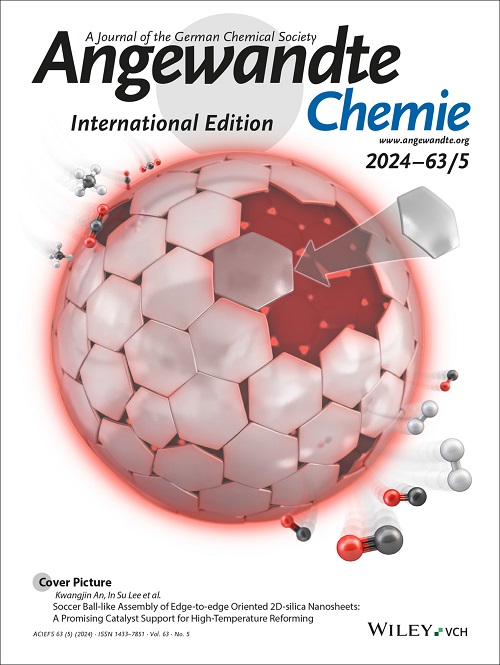Anode Engineering with pH-neutral Conjugated Polyelectrolyte Enabling over 19% Efficiency in Organic Solar Cells
IF 16.1
1区 化学
Q1 CHEMISTRY, MULTIDISCIPLINARY
引用次数: 0
Abstract
The lack of effective hole-transporting layers (HTLs) materials has become a significant bottleneck in the advancement of organic solar cells (OSCs). Particularly, to obtain sufficient doping property, most HTLs have to be used by mixing with substantial amounts of acid, which causes serious corrosion problems. Herein, by optimizing molecular conformation, we designed and synthesized two conjugated polyelectrolytes (CPEs) that exhibited superior hole-transporting capability without involving the addition of acid. The PEP-BT features a planar conjugated backbone constructed from non-fused segment, which leads to an enhanced doping effect, highly ordered molecular arrangement and reduced π-π stacking from 4.13 Å to 3.85 Å. These contributed to the outstanding hole collection performance of polyoxometalate-doped PEP-BT:POM while maintaining a neutral pH. The binary OSC showed a photovoltaic efficiency of 19.16%, demonstrating an unprecedented example that a CPE-based HTL can provide a photovoltaic efficiency exceeding 19% in OSCs. Moreover, as an another evidence of high-performance HTL, the organic light-emitting diode by incorporating PEP-BT:POM exhibited a superior luminous efficiency to the reference device, along with a decrease of 0.4 V for turn-on voltage. The results from this work demonstrates the great potential of CPEs as high-performance HTL materials.采用 pH 值中性共轭聚电解质的阳极工程使有机太阳能电池的效率超过 19
缺乏有效的空穴传输层(HTLs)材料已成为制约有机太阳能电池(OSCs)发展的重要瓶颈。特别是,为了获得足够的掺杂特性,大多数 HTL 都必须与大量的酸混合使用,从而导致严重的腐蚀问题。在此,我们通过优化分子构象,设计并合成了两种共轭聚电解质(CPE),它们无需添加酸即可表现出卓越的空穴传输能力。PEP-BT 具有由非融合段构建的平面共轭骨架,从而增强了掺杂效果,使分子排列高度有序,π-π 堆积从 4.13 Å 减少到 3.85 Å。二元 OSC 的光电效率达到了 19.16%,这是基于 CPE 的 HTL 能够在 OSC 中提供超过 19% 光电效率的前所未有的实例。此外,作为高性能 HTL 的另一个证据,加入 PEP-BT:POM 的有机发光二极管的发光效率优于参考器件,同时导通电压降低了 0.4 V。这项研究成果证明了 CPE 作为高性能 HTL 材料的巨大潜力。
本文章由计算机程序翻译,如有差异,请以英文原文为准。
求助全文
约1分钟内获得全文
求助全文
来源期刊
CiteScore
26.60
自引率
6.60%
发文量
3549
审稿时长
1.5 months
期刊介绍:
Angewandte Chemie, a journal of the German Chemical Society (GDCh), maintains a leading position among scholarly journals in general chemistry with an impressive Impact Factor of 16.6 (2022 Journal Citation Reports, Clarivate, 2023). Published weekly in a reader-friendly format, it features new articles almost every day. Established in 1887, Angewandte Chemie is a prominent chemistry journal, offering a dynamic blend of Review-type articles, Highlights, Communications, and Research Articles on a weekly basis, making it unique in the field.

 求助内容:
求助内容: 应助结果提醒方式:
应助结果提醒方式:


